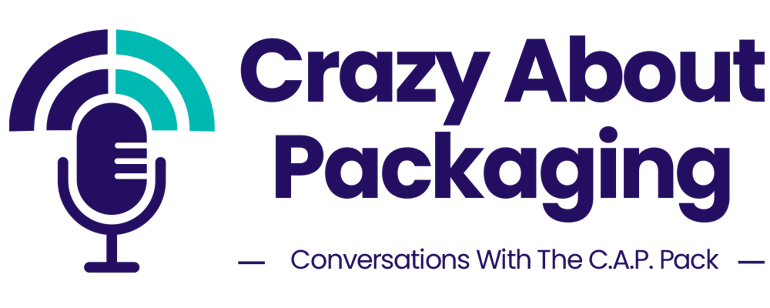
CPG manufacturers around the world have several great reasons to replace polystyrene packaging materials:
- Sustainability
- Cost-effectiveness
- Improving process efficiency
- Product functionality
- Consumer safety
Considerations must be made for each step in the process, from pre-production all the way to “end of life” recycling, and every one of them is important. Even the smallest oversight can become a significant issue or a costly mistake. That’s why companies need to make sure they choose the right replacement materials from the start.
Fortunately, the C.A.P. Pack is here to help you through that process. In our latest podcast, we cover six key elements to consider when looking for new packaging materials. By following these guidelines and collaborating with a team of packaging experts, you’re sure to save countless headaches and accelerate your material replacement initiatives.
Sneak Peek for Episode #5
You can watch or listen to the podcast now on our website, or subscribe on Spotify, Apple, and Google. Want a sneak peak? Here are the key considerations that we cover:
1. Processing
The packaging material you choose needs to meet a range of requirements for each step in the process, keeping in mind your application needs. It’s easy to focus solely on processing lines, but that’s only the beginning. You also need to consider transportation, retail environment, and recycling — each of these have their own demands, and the packaging material you choose has to meet them all.
“The ideal materials address all of the different aspects of stakeholders,” Mike explains. “So, we're not just dealing with the manufacturing floor — we're dealing with marketing, because the package needs to look a certain way to carry the brand image. Maybe it needs to be clear, maybe it needs to be colored, maybe it needs to be decorated, all those things have to be taken into account along the way to develop a robust solution.”
2. Specific Characteristics Needed
With your broad scope planning in place, it’s time to focus on the production line and what features your materials need to have. Some of those factors might include needing to withstand 195-degree Fahrenheit temperatures for hot fill processing, or having minimal shrink and cooling times to process on form-fill-seal (FFS) or rigid thermoform production.
Beyond physical characteristics, what other requirements will your material need? Does the product need to maintain a prolonged shelf life? Will it need to survive a freezer or a microwave, or both? It is critical that your target material replacement checks as many of the “boxes” as possible to ensure the best material fit for your application.
3. Safety
Product safety is a top-tier consideration for packaging materials, and it requires a significant investment in time and money. Both food and medical product packaging require FDA approval, as well as several other certifications, ensuring these materials, for example, are free from BPAs, phthalates, and any other harmful chemicals.
It’s not just the materials, though — the design, process, and performance (such as shelf life) all need to be validated before making a full product line conversion. In our episode, Jonathan mentions aseptic production lines as an example, which might use hydrogen peroxide or steam sterilization. The material you choose must be compatible with these techniques, and not suffer any adverse effects that compromise sterility or efficacy.
4. Sustainability
Sustainability concerns and mandates are a primary motivator for material replacement, but “sustainability” is a very broad term — it can have many different definitions. So we need to clearly answer the question, “How will your material replacement initiative improve sustainability?”
Mike’s very straightforward answer is: “Use less plastic!” More specifically, look for materials that offer higher yields. In other words, consider how many units of packaging you get per pound (or kilogram) of rollstock.
5. Cost
As important as sustainability is, business owners need to consider the total cost of implementing those changes. No matter what replacement material you choose, setting up the new infrastructure will come with a list of cost considerations including:
- Safety approvals and certifications
- Validating materials, processes, and equipment
- Retrofitting existing production lines, or building entirely new lines
- Training staff on new procedures
Although these expenses can be significant, they are investments that target the cost with the longer term goal of lowering the total cost of ownership, and benefit from consideration to achieve sustainable benefits such as lighter materials with higher yields.
6. Timeline
The time that needs to be invested is equally as important as the financial cost of upgrading your packaging materials. This process can take 3-5 years on average to reach the point of full implementation, so you need to have confidence in the material you choose and that it will provide you with the desired solution. Starting with the right material solution is critical given the investment in time and resources to develop an alternative. Discovering the material is not the right fit as you move through the process can have significant implications on the project cost and timeline.
The best way to minimize your timeline is working with a team of experts that know every little detail, what pitfalls to avoid, and how to streamline your process right from the start. At ICPG, we’re here to help you make this transition smoothly, efficiently and painlessly. If you have any questions, or if you’re ready to get started, we invite you to reach out to us today.
Join the Conversation
Have you had any success replacing PS in your packaging lines — or are you still looking for a solution? What challenges have you encountered along the way? Follow us on Twitter, LinkedIn, Facebook, and Instagram and share your thoughts! And be sure to check out the podcast on Spotify, Apple, Google, or our website.



